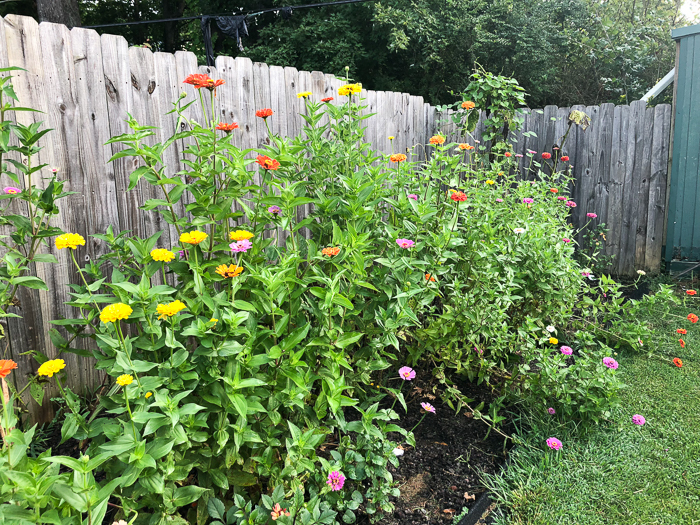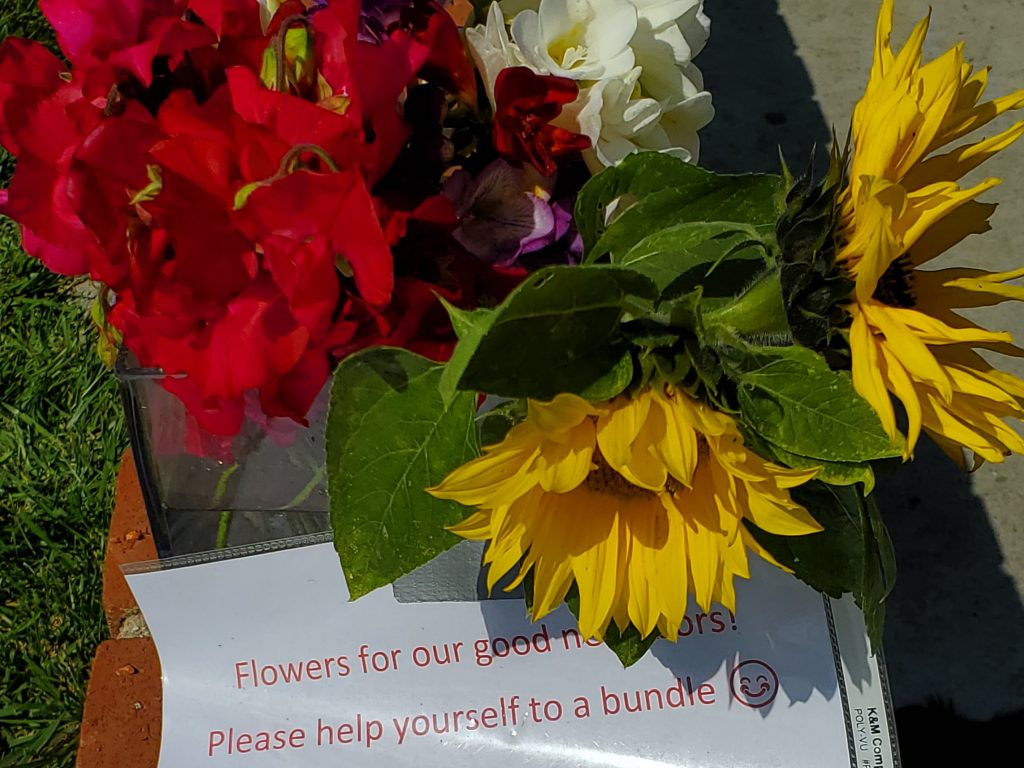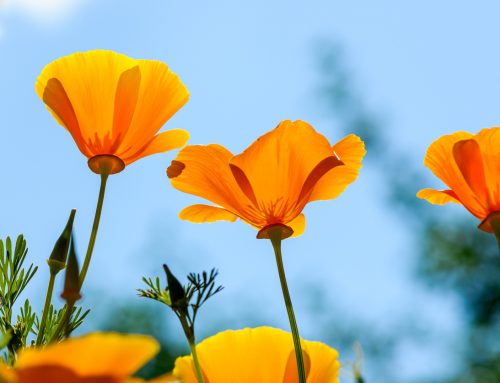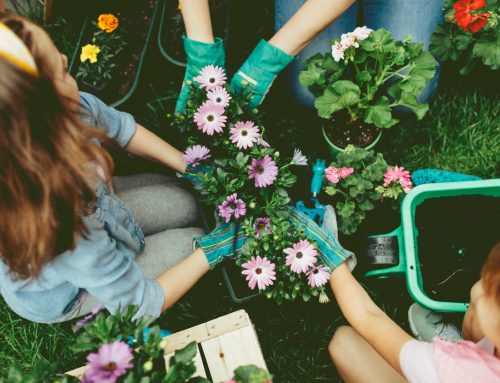We, gardeners, tend to focus on vegetable gardens, and with good reason – nothing beats the rich taste of homegrown tomatoes and vegetables.
But consider the benefits of devoting some space in your vegetable garden to cut flowers – being able to admire their beautiful blooms and also attracting more pollinators to your vegetable plants.
Now that we are all spending more time at home indoors, it’s a great time to discover the joy of planting a cutting garden and brightening up your indoor spaces with a vase of cut flowers from the garden.
Consider these tips for planting a cut flower garden:
- Before you start growing your flowers, you need to grow your soil. It should be rich in organic matter to improve water retention and drainage. Work in several inches of compost before planting and a slow-release flower fertilizer.
- Plant flowers with a variety of colors and shapes. Alstroemerias, Zinnias, Snapdragons, Celosia, Statice, Sunflowers, and Rudbeckia are popular choices because they are relatively easy to grow, offer a variety of color and bloom sizes and can be planted in the garden or in containers.
- Choose varieties with long stems: Flowers with long, straight stems are easier to arrange, preferably 16-18 inches long. Using plant supports or ties will help keep the tall stems from leaning sideways as they grow.
- Flowering plants should be planted in full sun where they can get a minimum of 6 hours of sun a day. If you don’t have a large area to devote to cut flowers, you can tuck plants wherever you have space among other perennials and shrubs or even in pots. The added benefit to planting them among other plants is that you can minimize the bare spots in the garden once the flower stems are cut.
- To keep flower production high, feed the plants with a liquid flower fertilizer, which would be one with a small percentage of nitrogen (for vegetative/green growth), a higher percentage of phosphorous (for root and flower bud growth), and a little potassium (for overall plant health). Also, remove dead or spent blossoms as they can reduce production of new blooms. Remember, the more you cut, the more your plants will produce new flowers!
- Extending the life of the flower after cutting is really important. Adding a tiny drop of bleach to your vase will control bacteria and help the blooms to last longer. Cut flower stems at a 45 degree angle to increase water uptake, and make sure to remove any leaves that are under the water line. Trim a bit off the bottom of the stem every few days and replace with fresh water to help keep the flowers fresh.
Growing cut flowers has other meaningful benefits that give us an opportunity during these challenging times to teach our kids about gardening and to share your blooms with others. Setting out a vase of flowers in your front yard for neighbors walking by to take a few blooms with them can certainly bring a smile to their face.










